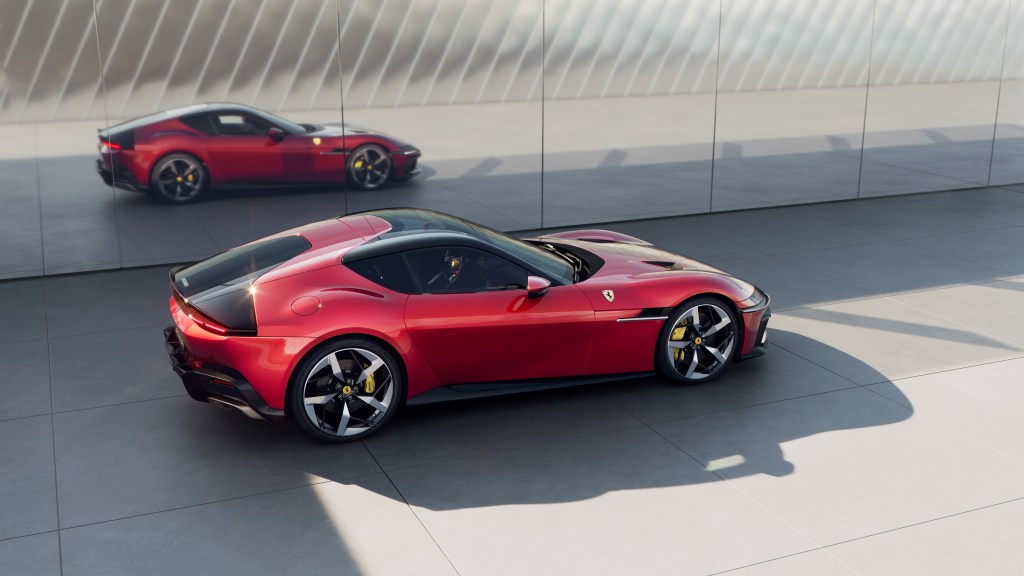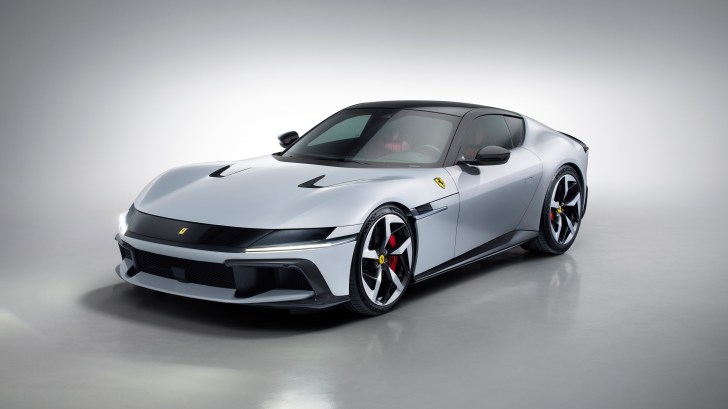Ferrari has announced the newest addition to its lineup of luxury cars, the 12Cilindri, which boasts a top speed of over 211 mph.
Unveiled in Miami, the 12Cilindri draws inspiration from grand touring cars of the 1950s and ’60s. The two-seater relies on the naturally aspirated F140HD engine, albeit an updated version that delivers 819 horsepower at 9,500 rpm.
Ferrari made numerous modifications to the V12 in pursuit of improved performance. The engineers adopted titanium connecting rods to save 40% in rotating mass compared to steel. They used lighter aluminum alloy pistons and a rebalanced crankshaft.
Engine modifications were made to optimize torque delivery in all conditions.
A fitting example of this is the use of a software strategy known as Aspirated Torque Shaping (ATS). The Maranello engineers can sculpt the torque curve in the third and fourth gears using an electronic control. As a result, 80% of the maximum torque is available at a mere 2,500 rpm.
Ferrari used a new transmission for the 12Cilindri

While the Ferrari 812 Competizione had a seven-speed dual-clutch transmission (DCT), the 12Cilindri incorporates a different setup. The new two-seater features an eight-speed dual-clutch transmission that Ferrari says delivers “5% shorter gear ratios in the lower gears and a 12% increase in torque at the wheels.”
The closer gear ratios result in improved acceleration through the gears. Ferrari says the extra gear improves range in motorway driving conditions.
Ferrari says that the 12Cilindri will go from zero to 62 mph in a mere 2.9 seconds and from zero to 124 mph in 7.9 seconds. The claimed maximum speed is more than 211 mph.
Handling remains a focus for Ferrari
The Ferrari 12Cilindri features four-wheel independent steering, a system that debuted on the 812 Competizione.
This system manages the movement of each wheel independently. This helps with yaw management while cornering as well as responsiveness when making rapid direction changes.
Ferrari further pursued improved handling with its weight distribution — 47.8% in the front and 52.2% in the rear. The 12Cilindri also has a wheelbase 0.8 inches shorter than the 812 GTS.
Ferrari increased torsional rigidity by 15% after focusing on the components for the shock towers and A and C pillars.
Ferrari’s electronic aids return for the 12Cilindri. The Virtual Short Wheelbase 3.0 provides improved high-speed agility. The ABS Evo provides reduced braking distances. The Slide Slip Control 8.0 works with the ABS Evo to learn tire grip levels even when steering.
A different approach to design

The two-seater does not feature the traditional grille and headlights used by other vehicles in the Ferrari lineup.
Instead, designer Flavio Manzoni and the Ferrari Styling Centre design team opted to introduce a single, wraparound band that houses the headlights. This rounded design stands in stark contrast to the sharp-edged taillights.
Smooth lines and uninterrupted surfaces are the focus. The front-mounted, single-piece bonnet is a fitting example. So are the lines running down both sides of the 12Cilindri.
The goal of the cockpit design was to provide comfort for the passengers. The glass roof provides a feeling of airiness for those in the double cockpit layout. The tinted design aims for optimum thermal efficiency in summer and winter.
The driver and passenger have separate digital displays connected by a 10.25-inch touchscreen. The driver’s display is 15.6 inches of information about driving and vehicle dynamics. The passenger’s screen is 8.8 inches.
The hardtop Ferrari 12Cilindri will debut this summer. The 12Cilindri Spider with its retractable hard top will arrive later in 2024.
